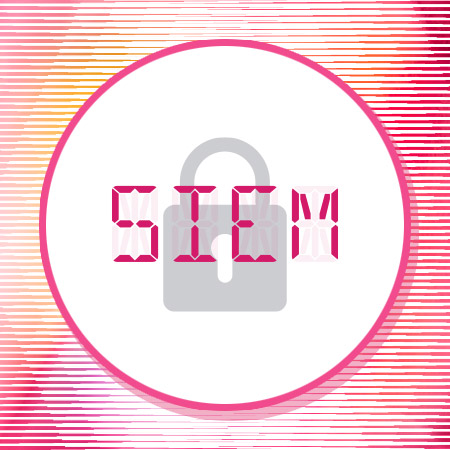What is SIEM (Security Information and Event Management)?
A security information and event management (SIEM) solution is a core piece of a security operation center (SOC) tool kit. SIEM solutions collect data from across an organization’s security architecture and alerts on attacks, enabling rapid threat detection and response, but is it enough?

SIEM Process and Capabilities
SIEM solutions are one of the main reasons why small security teams can scale to protect massive enterprises. By following a set process, a SIEM generates a high-quality collection of security data, which can be used to achieve a number of different security objectives.
The Process
A SIEM solution is designed to provide vital context for detecting and responding to cybersecurity threats. To provide this context and threat detection and response, a SIEM will go through the following process:
- Data Collection: Data collection is an essential part of a SIEM’s role within an organization’s security architecture. A SIEM will collect logs and other data from systems and security solutions throughout the organization’s network and gather it all into a single, central location.
- Data Aggregation and Normalization: The data collected by a SIEM comes from a number of different systems and can be in a variety of different formats. To make it possible to perform comparison and analysis, a SIEM will aggregate this data and perform normalization so that all comparisons are “apples to apples”.
- Data Analytics and Policy Application: With a single, consistent dataset, the SIEM solution can start looking for indications of cybersecurity threats in the data. This can include both looking for predefined issues (as outlined in policies) and for other potential indications of attack detected using known patterns.
- Alert Generation: If a SIEM solution detects a cybersecurity threat, it notifies an organization’s security team. This can be accomplished by generating a SIEM alert and may take advantage of integrations with ticketing and bug reporting systems or messaging applications.
The Capabilities
A SIEM solution is designed to act as a central clearinghouse for all cybersecurity data within an organization’s network. This enables it to perform a number of valuable security functions, such as:
- Threat Detection and Analysis: Security information and event management solutions have built-in support for policies and data analytics tools. These can be applied to the data collected and aggregated by the SIEM to automatically detect signs of a potential intrusion into an organization’s network or systems.
- Forensics and Threat Hunting Support: A SIEM solution’s role is to collect security data from across an organization’s network and transform it into a single, usable dataset. This dataset can be invaluable for proactive threat hunting and post-incident digital forensic investigations. Instead of attempting to manually gather and process the data that they need from different systems and solutions, analysts can simply query the SIEM, dramatically increasing the speed and effectiveness of investigations.
- Regulatory Compliance: Companies are required to comply with an ever-increasing number of data protection regulations that carry strict data security requirements. SIEM solutions can help to demonstrate regulatory compliance because the data that they collect and store can demonstrate that required security controls and policies are in-place and enforced and that a company has not experienced any reportable security incidents.
Security Information and Event Management (SIEM) Tools
A number of different security vendors create SIEM solutions. Some of the leading and most commonly used SIEMs include:
- ArcSight
- IBM QRadar
- LogRhythm
- Splunk
These solutions range from budget-friendly solutions designed to support small businesses to enterprise-scale solutions intended to take a central role in ensuring the security of multinational organizations.
SIEM Limitations
SIEM tools are very powerful and can be an invaluable component of an organization’s security architecture, but they aren’t perfect. Along with their benefits, SIEM solutions have their limitations as well, including:
- Complex Integration: To be effective, SIEM solutions must be connected to all of an organization’s cybersecurity solutions and systems, which can include a diverse collection of systems. As a result, integrating a SIEM with all of these tools can be complex and time-consuming and requires a high level of security expertise and familiarity with the systems in question.
- Rules-Based Detection: SIEM solutions can detect a wide range of cybersecurity threats; however, these detections are primarily based upon predefined rules and patterns. This means that these systems may miss novel or variant attacks that do not match these known patterns.
- Lack of Contextualized Alert Validation: SIEM solutions can dramatically decrease a SOC’s alert volume through data aggregation and by applying additional context to alerts. However, SIEMs generally do not perform contextualized alert validation, resulting in false-positive alerts being sent to security teams.
SIEM Integration with Check Point’s Infinity SOC
SIEM solutions are a valuable part of an organization’s security deployment. However, despite all of their benefits, they don’t provide security teams with the certainty that they require to maximize the efficiency of threat detection and response activities.
This is why SIEM solutions are most effective when integrated with Check Point’s Infinity SOC. Infinity SOC provides 99.9% precision when detecting security incidents across an organization’s network and endpoints, enabling security analysts to focus their attention on real threats. To learn more about the capabilities of Infinity SOC, check out this demo video. You’re also welcome to try out Infinity SOC in your own network with a free trial.
